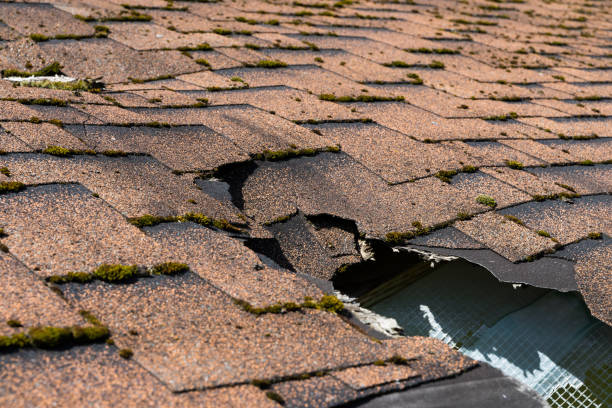How to Spot Roofing Problems Before They Get Worse

Your roof is a vital part of your home, protecting you and your belongings from the elements. However, like any part of your house, it can develop issues over time. Recognizing roofing problems early can save you money and prevent more extensive damage. In this blog post, we’ll discuss some simple ways to spot roofing problems before they escalate.
Regular Roof Inspections
Regular inspections are one of the best ways to catch roofing problems early. You don’t need to be a roofing expert; a simple visual check from the ground or a ladder can often reveal issues. Look for:
- Missing or damaged shingles or tiles
- Curling or buckling shingles
- Cracked or worn-out flashing around chimneys and vents
- Accumulated debris or moss growth
Check For Water Stains
Water stains on your ceiling or walls are a clear indication of a roofing problem. Leaks in your roof can cause these stains. If you notice any discoloration or water spots, it’s essential to address the issue promptly.
Inspect Attic and Interior
Visiting your attic can provide valuable insights into your roof’s condition. Look for signs such as:
- Daylight coming through the roof boards
- Dark spots or staining on the underside of the roof decking
- Damp insulation
- Presence of mold or mildew
Pay Attention to Your Gutters
Your gutters are crucial in channeling rainwater away from your roof and home. Check your gutters regularly for:
- Debris buildup, which can cause water to overflow and damage the roof edge
- Granules from shingles, as excessive granule loss, can indicate shingle wear
- Sagging or detached gutters, which can strain your roof’s structure
Look For Sagging Roof Lines
A sagging roof is a significant concern that should be addressed immediately. Sagging can indicate structural damage or weakened roof supports. Inspect your roofline from a distance to identify any noticeable dips or depressions.
Check Flashing and Seals
Flashing is used around chimneys, vents, and skylights to prevent water from seeping into your home. Over time, flashing can become loose or damaged. Inspect these areas for cracked or missing sealant and loose or damaged flashing.
Monitor For Algae or Moss Growth
Algae and moss can grow on your roof in shaded or humid areas. While they may not immediately damage your roof, their presence can lead to moisture retention, harming shingles or tiles over time. Gently remove any growth to prevent further issues.
Pay Attention to Aging Roofs
The age of your roof can be a significant factor in its condition. Most roofing materials have a limited lifespan. If your roof is nearing the end of its expected lifespan, it’s a good idea to be extra vigilant in monitoring its condition and considering replacement.
Beware of Ice Dams in Winter
In cold climates, ice dams can form on your roof, causing water to back up under your shingles and potentially lead to leaks. Proper insulation and ventilation can help prevent ice dams, but it’s crucial to monitor your roof during the winter months for signs of trouble.
Hire a Professional Roof Inspection
While regular visual inspections are helpful, it’s also a good idea to schedule a professional roof inspection every few years. A certified roofing contractor can provide a more thorough assessment and catch problems that may take time to be visible.